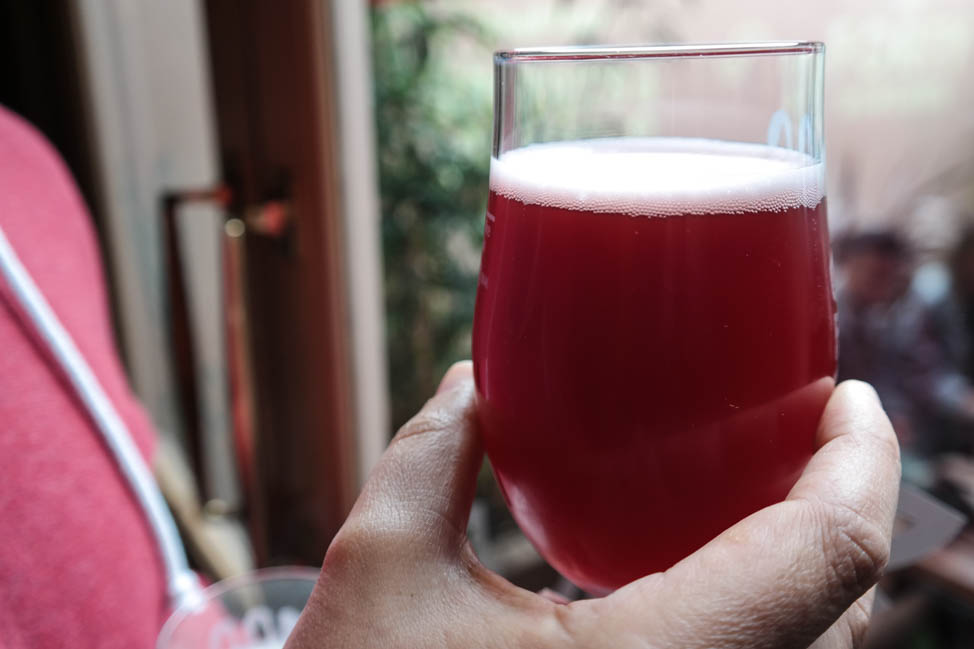In Love with Lambic
Unfortunately, outside of a few outstanding beer bars and stores, sours do not have a strong presence. Most restaurants do not stock them, sticking to the typical mixture of large scale beer brands mixed with some domestic and imported craft brews, which makes sense since that is what sells. However, getting to spend a weekend in Brussels and visit a Lambic brewery has reminded me just how unique this beer is and why we should all drink more sour beer.
Comparing beer in Belgium to other countries is a little unfair. The culture surrounding beer has endured for centuries and that passion for beer making has resulted in very little mediocre beer and loads of top notch, high quality beer. Now the US is probably the most exciting place in the world for beer makers, with loads of innovative thinking and risk takers (the British would say that is so typical of Americans).
The downside is that to get to the interesting stuff, you do have to sift through a lot of crap.
Not so in Belgium. Go to any bar, close your eyes, blindly pick a beer and chance are you picked a winner.But what if you find yourself in a bar and want something different? Then seek out sour beer. What makes them so unique and different? To start with, the way they are fermented define the style and only two other breweries outside of Belgium do something similar (Allagash and Russian River, both in the US).
Most beer is made by mixing malt with water and allowing the sugary starch to get released so that the yeast that is added later can consume the sugar and develop alcohol as a byproduct. The whole process is very controlled and exact. Sours are made differently. After mixing the water and malt (with the addition of wheat in this case), the mix is pumped into what is called a coolship, basically a large shallow open-air container. The mix sits overnight, which is when the magic happens: spontaneous fermentation. Yeast and bacteria naturally exists in the air so Lambic beer makers utilise this wild yeast and bacteria to induce fermentation. By sitting uncovered overnight in the coolship, the wild yeast and bacteria is allowed to inoculate the liquid. In the morning, the beer is drained off and it is stored in barrels for ageing. Lambics also only used dried aged hops, which do not impart any flavour and are solely used for preserving, which was the original use of hops. The result is a beer without that bitter, hoppy quality.
Up to eighty different microorganisms have been identified in Lambics, some said to be unique to the area around Brussels and impart that unique sour quality. To prevent bad bacteria growth in the beer, Lambics are only made during cooler months, from October to March. In the warm summer months, flies and bugs in the air can fall into the coolship, spawning bad bacteria and spoiling the beer. Cantillon Brewery that we visited in Brussels loves finding spiders in their building, since they eat any potentially threatening bugs and flies. Apparently there is a punishment for killing spiders in the building. Gross but resourceful.
In addition to normal sours, there are many fruit-based sour beers. These are not your crappy fruit beers that are in every supermarket, where syrups are added to make a sickly sweet, fake fruit flavour. In Belgium, most breweries follow the seasons and use only fresh fruit. Cantillon uses the spring and summer time when they are not making any beer to make their kriek (sour cherry) and rose de gambrinus (raspberry) beers. They use only whole fresh fruit sourced locally from the Brussels countryside and add it to the ageing sour beer. The result is a shockingly bright coloured beer, that smells of freshly picked fruit but has a distinct, sour flavour. It is sort of like a manly fruit beer.
So if you find yourself in a beer store or bar, looking for something different, search for a Lambic. I would advise to avoid the popular Lindemans brand though, as their fruit beers are more sweet than sour, which I find difficult to drink after a few gulps.












